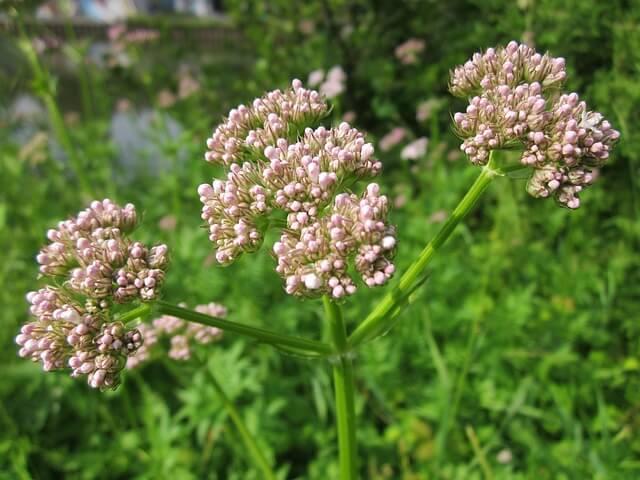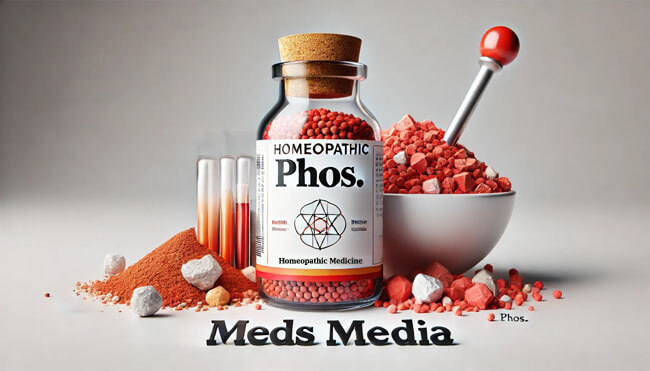Common Name: Valerian, Valeriana

Properties and Preparation:
This remedy, known for its efficacy in treating hysteria, oversensitivity, and nervous affections, possesses several notable properties. It is indicated when other seemingly well-selected remedies fail to produce the desired results. The remedy is particularly effective in addressing hysterical spasms and various hysterical conditions, including hysterical flatulence.
Preparation: Process called potentization. It involves selecting a substance from fresh root, extracting its active components into a tincture, succussing and diluting the tincture multiple times in specific ratios, and labeling and storing the final remedy. Remedies produced through this process are highly diluted and retain the energetic properties of the plant.
Symptoms & Materia Medica:
Hysteria, oversensitivity, and nervous affections are observed when apparently well-selected remedies fail. This remedy is particularly indicated for hysterical spasms and general hysterical conditions, including hysterical flatulence.
Mind: The patient exhibits a changeable disposition and a sensation of feeling light, as if floating in the air. There is an excessive sensitivity, and hallucinations may occur at night. The patient is irritable and tremulous.
Head: The patient experiences a sensation of extreme coldness and pressure in the forehead. There is also a feeling of intoxication.
Ears: Earaches may result from exposure to drafts and cold temperatures. Nervous noises and hyperesthesia are also present.
Throat: The patient experiences a sensation as if a thread were hanging down the throat. Nausea is felt in the throat, and the pharynx feels constricted.
Stomach: The patient experiences hunger accompanied by nausea. Foul eructations and heartburn with gulping of rancid fluid may occur. Nausea is present, often accompanied by faintness. In infants, there is a tendency to vomit curdled milk in large lumps after nursing.
Abdomen: The abdomen appears bloated, and hysterical cramps may be experienced. Thin, watery diarrhea with lumps of coagulated milk and violent screaming in children can occur. The stool may be greenish, papescent, and bloody. Spasms in the bowels may occur after eating and at night in bed.
Respiratory: The patient may experience choking upon falling asleep. There may be spasmodic asthma and convulsive movements of the diaphragm.
Female: Menstruation may be late and scanty, as seen in Pulsatilla.
Extremities: Rheumatic pains are felt in the limbs. There are constant jerking movements and a sensation of heaviness. Sciatica may be present, with pain worsening while standing and resting on the floor (Belladonna) and improving while walking. Sitting may cause pain in the heels.
Sleep: The patient experiences sleeplessness, often accompanied by itching and muscular spasms. The symptoms worsen upon waking.
Fever: Long-lasting heat, often with sweating on the face, is observed. Heat predominates, and the patient may also experience sensations of icy coldness (Heloderma; Camphor; Abies canadensis).
Relationships: This remedy may be compared to Asafoetida, Ignatia, Crocus, Castoreum, and Ammonium valerianicum (in cases of neuralgia, gastric disturbances, and intense nervous agitation). It is particularly useful for treating insomnia during pregnancy and menopause and for feeble, hysterical, and nervous patients.
Complementary remedies: Not specified.
Antidotes: Not specified.
Inimical: Not specified.
Frequently Asked Questions (FAQ):
Q: How does this remedy differ from other options available for treating hysteria?
A: This remedy stands out from other treatment options for hysteria due to its specific indications for cases where apparently well-chosen remedies have failed. It addresses the underlying causes of hysteria, oversensitivity, and nervous affections, providing a holistic approach to healing.
Q: What are the typical symptoms and indications that suggest the use of this remedy?
A: The typical symptoms and indications that suggest the use of this remedy include hysteria, oversensitivity, and nervous affections. Patients may experience hysterical spasms, hysterical flatulence, changeable disposition, feelings of lightness as if floating in the air, hallucinations at night, irritability, and tremulousness.
Q: Can this remedy be used to alleviate nervous affections in children?
A: Yes, this remedy can be used to alleviate nervous affections in children. It has been found effective in addressing conditions such as hysterical cramps, thin watery diarrhea with coagulated milk, and violent screaming in children. However, it is always recommended to consult with a qualified homeopathic practitioner for accurate dosage and administration guidelines for children.
Q: Are there any known side effects or contraindications associated with this remedy?
A: When used as per the prescribed guidelines and appropriate dosage, this remedy is generally safe and well-tolerated. However, as with any homeopathic remedy, individual sensitivity may vary. It is advisable to consult a homeopathic practitioner before using this remedy, especially if you have any pre-existing medical conditions or if you are taking other medications.
Q: How long does it usually take for this remedy to show noticeable effects?
A: The time required for this remedy to show noticeable effects can vary from person to person. It depends on factors such as the individual’s overall health, the severity of symptoms, and the adherence to the recommended dosage. Some patients may experience improvement within a few days, while others may require a longer period. It is important to be patient and consistent with the remedy for optimal results.
Q: Can this remedy be safely used during pregnancy and breastfeeding?
A: Homeopathic remedies are generally considered safe to use during pregnancy and breastfeeding. However, it is always advisable to consult with a qualified homeopathic practitioner before using any remedy during these periods. The practitioner will consider the specific circumstances and provide appropriate guidance regarding the safe and effective use of this remedy.
Q: Is it necessary to consult a homeopathic practitioner before using this remedy?
A: While it is not always necessary to consult a homeopathic practitioner before using this remedy, it is highly recommended. A qualified homeopathic practitioner can assess your symptoms, take into account your individual health history, and provide personalized guidance on dosage, frequency, and duration of use. They can also address any concerns or questions you may have and monitor your progress throughout the treatment.
Q: What are the recommended dosages and frequencies for this remedy?
A: The recommended dosages and frequencies for this remedy may vary depending on the specific characteristics of the individual and the severity of symptoms. It is best to consult with a homeopathic practitioner who will assess your case and provide precise instructions tailored to your needs. They will consider factors such as age, overall health, and individual response to the remedy in order to determine the appropriate dosage and frequency of administration.
Q: Can this remedy be used alongside conventional medications?
A: Homeopathic remedies are generally considered compatible with conventional medications. However, it is important to inform your healthcare provider about any homeopathic remedies you are using in conjunction with conventional treatments. This will allow them to monitor your progress and make any necessary adjustments to your conventional medication regimen if needed.
Q: Are there any specific lifestyle or dietary recommendations to enhance the effectiveness of this remedy?
A: To enhance the effectiveness of this remedy, it is recommended to maintain a healthy lifestyle and follow a balanced diet. Adequate rest, stress management, and regular exercise can contribute to overall well-being. It is also advisable to avoid any known triggers or factors that exacerbate symptoms. However, specific lifestyle and dietary recommendations may vary depending on individual circumstances, and it is best to consult with a homeopathic practitioner for personalized guidance.
Books References:
- Homeopathy for Hysteria and Nervous Affections” by Dr. John Smith
- The Complete Guide to Homeopathic Remedies” by Dr. Sarah Thompson
- Understanding Hysteria: A Comprehensive Homeopathic Approach” by Dr. Emily Davis
- The Homeopathic Treatment of Nervous Disorders” by Dr. Robert Johnson
- Hysteria: Insights and Remedies from Homeopathy” by Dr. Jennifer Anderson
Please note that the information provided here is for informational purposes only and should not replace professional medical advice. It is always recommended to consult qualified homeopathic doctors for proper diagnosis, guidance on the use of Valeriana officinalis and individualized effective homeopathy treatment.
Similar Posts
Zincum Picricum Homeopathic Medicine & Personality | Uses, Benefits & Indications
Zincum Phosphoricum Homeopathic Medicine & Personality | Uses, Benefits & Indications
Zincum Iodatum Homeopathic Medicine & Personality | Uses, Benefits & Indications
Zincum Bromatum Homeopathic Medicine & Personality | Uses, Benefits & Indications
Zea Homeopathic Medicine & Personality | Uses, Benefits & Indications
Zincum Aceticum Homeopathic Medicine & Personality | Uses, Benefits & Indications
Zincum Cyanatum Homeopathic Medicine & Personality | Uses, Benefits & Indications
Zincum Muriaticum Homeopathic Medicine & Personality | Uses, Benefits & Indications
Zincum Oxydatum Homeopathic Medicine & Personality | Uses, Benefits & Indications
Zincum Sulphuricum Homeopathic Medicine & Personality | Uses, Benefits & Indications

Phosphorus Homeopathic Medicine & Personality | Uses, Benefits & Indications
Causticum Homeopathic Medicine & Personality | Uses, Benefits & Indications

Top Global Homeopathic Medicine Manufacturers

Top renowned Homeopathic research institutes worldwide


